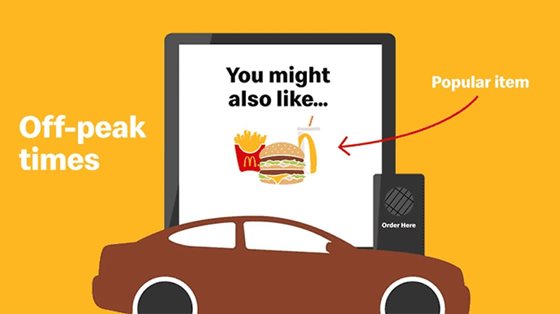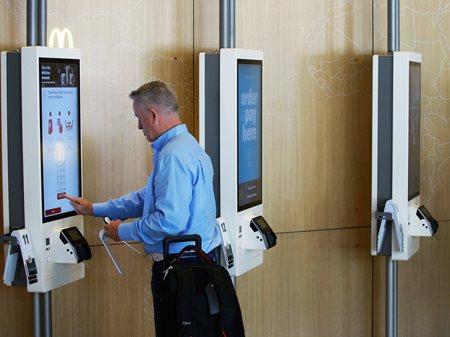Why All Marketers Should be McLovin’ Personalization
It’s no secret that personalization has been a top priority for marketers in commerce as of late. CMS and eCommerce platforms have long been shouting about the benefits of customer personalization from the rooftops. Now, many industries on the streets below are listening.

According to Uberflip’s Content Experience Report, personalized recommendations increase the chances of a visitor consuming more content than a generic recommendation by a whopping 60%. That’s more than half! With staggering stats such as these, it’s no wonder that top brands are driving towards personalization.
Take retail giant Amazon, for example. The personalization on the site runs deep. I’m sure we’ve had experience browsing for goodies on Amazon where items that are aligned with exactly what you are looking for appear in the recommended section. The consumers of today’s digital landscape want to be able to find things lickety-split without having to do much digging or searching. If personalization can simplify the purchase process for consumers, it will undoubtedly lead to higher conversion rates.
Personalization for All
We are well aware that the retail sector is loving personalization, but are other industries thinking about it? Should they be thinking about it? Absolutely!
Take McDonald’s, for instance. The fast-food giant recently made its largest acquisition in 20 years for a supersize $300 million. What did they acquire? Israel’s Dynamic Yield, a technology company focused on personalized experiences. This makes McDonald’s one of the first restaurants to have a marked presence in the world of personalization.
What does this mean for the patrons of McDonald’s? It means that peckish diners can engage with agile and adaptive drive-thru menus that transform based on the time of day and the weather. It also means accessing quick order kiosks installed in the restaurant for a fast-tracked, seamless experience. McDonald’s is committed to streamlining their customers’ experiences.

I recently connected with Randy Frisch, CMO of Uberflip, the leading digital content experience platform, to discuss personalization and hear his insights on how the concept is spreading into many industries.
In Uberflip’s Content Experience Report, it mentions that personalized recommendations increase the chances of a visitor consuming more content than generic recommendations by 60%. How can marketers create personalized content experiences at scale?
“To really nail a great content experience, you need to take-into-account environment, structure, and engagement.
-
Content needs to be in an environment that people actually enjoy consuming it. Think about it—would you rather enjoy an ice-cold beer in a dingy basement or on the beach? The beer is the same, but the environment you’re in changes the experience of actually enjoying the beer.
-
Content then needs to be structured in that environment in a way that buyers can easily discover it. This includes organizing content by tagging it or grouping it by context.
-
Finally, you need to engage people with their content. Buyers go on a journey. One piece of content isn’t enough to engage them or to convert them. A great experience takes buyers from one piece of content to the next and leads them to convert.
We created an easy framework to help you build content experiences at scale while taking environment, structure, and engagement into consideration. You can take the following steps to create personalized content experiences at scale:
-
Centralize: Capture all the content you have (blogs, eBooks, videos, podcasts, etc.) into one central location.
-
Organize: Start by doing a content audit to understand exactly what kinds of content they have and then tag or label each piece by topic, persona, industry, etc. Categorizing content in this way will make it discoverable.
-
Personalize: Create collections of content for specific groups of people. These are personalized destinations that are individual experiences to send prospects to either through nurture or ABM campaigns or while doing prospect outreach. Don’t stop at just the content in that experience—add a tailored personal message to help engage. A good content experience platform will make this step easy.
-
Distribute: Take-into-account your go-to-market strategy. Perhaps you decided to focus on ABM. How do you segment your audience (vertical, geography, industry, etc.)? You may distribute these personalized content experiences differently to each using different tactics—direct mail, email nurtures, webinars.
-
Generate Results: Your role probably exists to drive revenue. So, you need to drive results with these experiences. A really good content experience platform can help convert."
How important is the use of AI when implementing personalization into a brands marketing strategy?
“AI allows you to make personalized experiences easy. Collecting data on where your buyer is engaging with your content, for how long, and how they’re moving through the buyer journey will help to suggest other pieces of content that might assist in converting them. Having the right marketing automation tools and integrations is critical to being able to distribute personalized content experiences at scale, and a good content experience platform will use AI to help generate results.”
McDonald’s has begun to implement content personalization, making them one of the first restaurants to do so. Content personalization has been a massive trend in the retail industry, what other sectors are ramping up their personalization efforts?
“B2B marketers are ramping up personalization efforts. Marketers, in general, make excuses for why they can’t, but there are great signs of companies trying to do more of this. ABM, as an example, has taken off, and marketers are starting to use personalized video and even highly personalized gifts to convert buyers. These strategies have positive results when done at the right stage of the buyer journey.”
Are there any industries that aren’t working towards personalization that should be?
“Healthcare is one that isn’t, but should. As someone with type-1 diabetes, I get a lot of information sent to me from medical organizations on managing diabetes. But not all diabetes is the same, and a personalized experience takes that into account and would send me information specific to me on managing my own diabetes. There are tons of patients that are in the same boat and have information overload but would benefit from having exactly the information they need.”
Uberflip’s Content Experience Report states that putting content in more than one place can increase views by eight-times on average. What is the best way to determine where specific content should be posted?
“First, you need to ensure that your content is organized well—you know what content you have, and it’s tagged for discoverability in multiple categories (by industry, type of content, stage of the buyer journey, etc.). You then need to have data to understand where your buyers are engaging with your content most, and how. Platforms that help do this include content experience and client relationship management platforms, and marketing automation tools. All of these integrated with a business intelligence tool will allow you to generate insights into buyer behaviors and personalize the content to the right buyer in the right places, distribute it, and generate results from it.”
Ending Thoughts
Personalization is beginning to span into a vast array of industries. While it’s clear that these personalized experiences can benefit the consumer, result in higher conversions, and have content viewed at a higher rate, it does cause some concern for marketers. It was found in the Rapt Media Report that 83% of marketers say that creating personalized content is their most significant challenge. By taking Randy’s advice above, we can see how marketers can take steps to manage with creating this personalized content more efficiently. Further, by organizing this content effectively, we can get it in front of the desired audience to generate results.
I find it interesting how Randy suggests that healthcare isn’t using personalization but should be. His point-of-view and frustrations with the lack of individual-focused healthcare advice are valid. It seems so simple, really. Healthcare is one of the most diverse industries in existence, and everyone's unique needs vary greatly from person to person. However, the healthcare industry is taking meaningful steps into the realm of patient personalization with the implementation of medical apps and AI, as well as CMS platforms that enable healthcare resources to deliver highly  personalized experiences. As much as we recognize and desire the benefits of healthcare personalization, we must also appreciate that due to the complicated nature of patient privacy and strict government controls on patient data in a highly regulated sector, it is simply not something that can be served up as swiftly as a burger and fries.
personalized experiences. As much as we recognize and desire the benefits of healthcare personalization, we must also appreciate that due to the complicated nature of patient privacy and strict government controls on patient data in a highly regulated sector, it is simply not something that can be served up as swiftly as a burger and fries.
The world is becoming increasingly streamlined and individually tailored to customers every day. It certainly seems that personalization for consumers is like a delicious, golden french-fry; once they have a taste, they can’t help but want more. Next time you’re craving a Big Mac, take a look around the restaurant and see if any of McDonald’s personalization efforts make an impact on your dining experience.

Erika Jones
Erika Jones is a Tech Reporter and Content Marketer with CMSC Media. Erika enjoys combining her creativity with her technical skills through graphic design. She has a background in communications and marketing and has a flair for social media and content creation. Erika is an avid traveller and enjoys seeing firsthand how technology connects us all in business and pleasure.